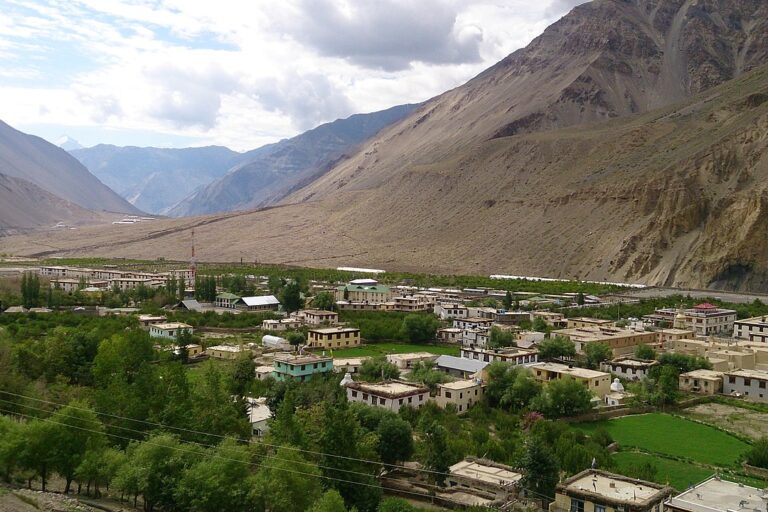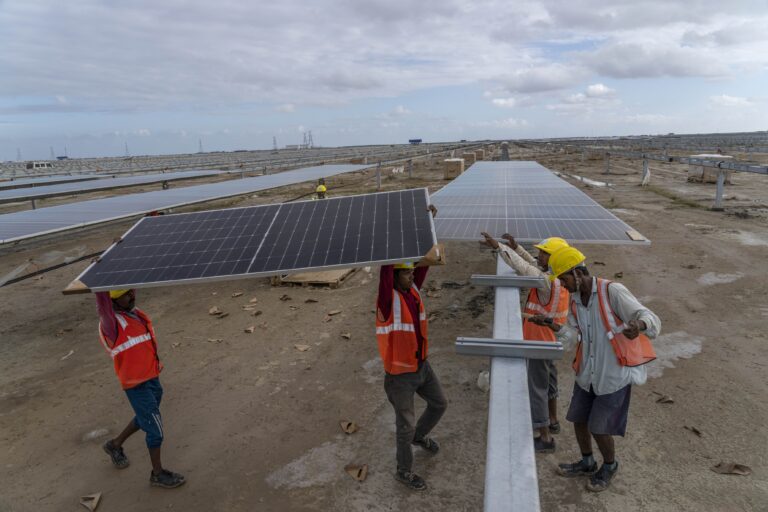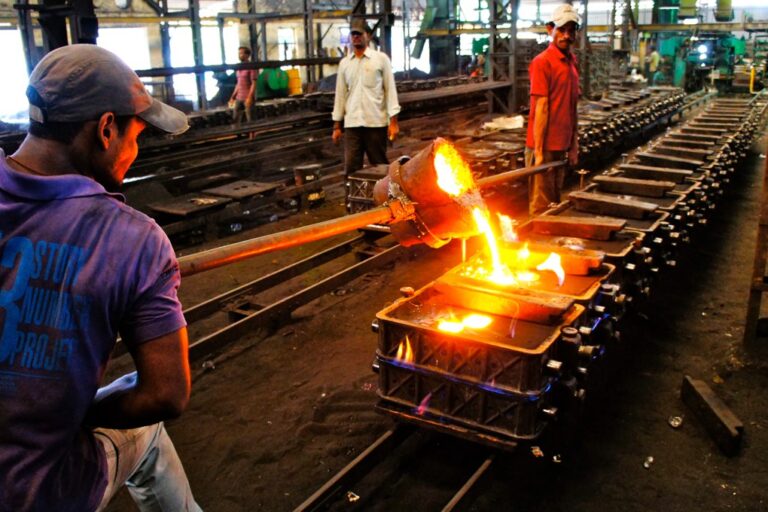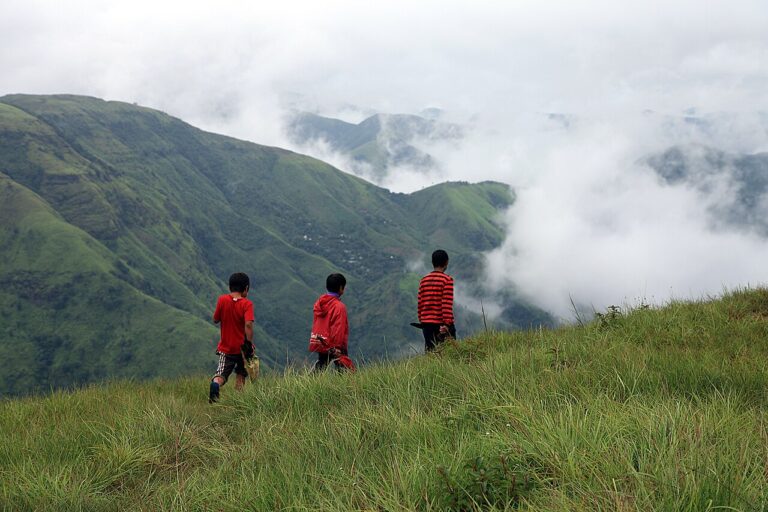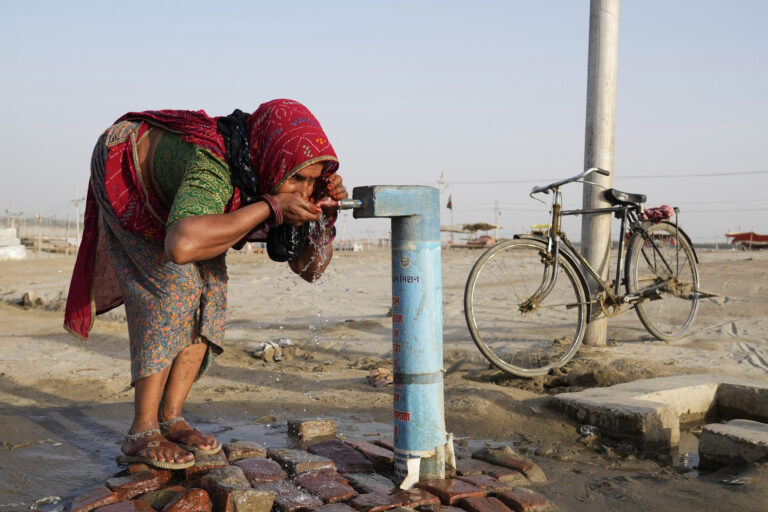- The climate co-benefits of the Mahatma Gandhi National Rural Employment Guarantee Scheme (MGNREGS) have remained enshrouded by the scheme’s primary goals of poverty alleviation and social security. However, with increasing climate vulnerabilities there is a need to quantify these benefits.
- Researchers from the Centre for Study of Science, Technology, and Policy (CSTEP) have created a framework to quantify the scheme’s climate co-benefits based on an analysis of the river rejuvenation programme ‘Usharmukti’ in West Bengal.
- Meanwhile, the latest union budget reduced the funds assigned to the scheme and labourers from states around India are protesting against these budget cuts.
One of the world’s largest work guarantee programmes, the Mahatma Gandhi National Rural Employment Scheme (MGNREGS), also offers climate co-benefits. The work offered under it has the potential to mitigate carbon emissions while facilitating climate adaptation and increasing resilience to climate impacts in rural areas. In an effort to measure these co-benefits, researchers from the Centre for Study of Science, Technology, and Policy (CSTEP) have developed a framework that, they claim, can help quantify MGNREGS’ achievements in climate adaptation and mitigation.
The scheme, based on the Mahatma Gandhi National Rural Employment Guarantee Act 2005, guarantees 100 days of employment every financial year, to at least one adult member of every rural household. The scheme lists 260 areas of work and a majority of them are related to natural resource management (NRM).
The framework developed by the CSTEP researchers, uses stratified samples (where subjects are divided into subgroups based on shared characteristics), at gram panchayat or block level, followed by field visits to quantify the climate co-benefits from these projects, such as carbon sequestration, climate resilience and adaptation.

Tashina Madappa Cheranda, lead author of the CSTEP report on the framework, said that India is one of the most vulnerable countries regarding climate change impact. “The country has climate-related commitments like Nationally Determined Commitments (NDCs) and net-zero. We also have the MGNREGS, which offers social security to the vulnerable communities. It is designed to achieve several climate-related benefits by default. If the government accounts for these benefits from MGNREGS, it will help meet climate-related international goals.”
Cheranda affirms that the framework has been prepared based on India’s global commitments such as the NDCs, the Sustainable Development Goals (SDGs) and the reporting requirements for Adaptation Communications to the United Nations Framework Convention on Climate Change (UNFCCC) from 2024.
Nikhil Dey, whose organisation Mazdoor Kisan Shakti Sangathan played a pioneering role in drafting MGNREGA, also said that MGNREGS is the biggest mitigation programme in the world, but it is not recognised that way. “The scheme is focused on creating small structures like ponds, water harvesting structures, etc. To get work, labourers need not travel far. The scheme aims at labour-intensive work. While drafting the programme, it was under consideration that it would be a nature-friendly programme,” he said.
Analysing climate co-benefits
As part of developing the framework, the researchers studied Usharmukti, a river rejuvenation programme implemented in West Bengal, to quantify its climate co-benefits. The project aimed to rejuvenate seven large rivers originating and flowing through the state. The labourers created several assets to help farmers in the area fight drought.
As per MGNREGS’ primary goal of employment, Usharmukti has helped 187,199 households by creating 53 million days of work. While the employment and associated numbers are accounted for under the government’s Management Information System (MIS), some other important data gets missed out.
For instance, the project, that began in 2017, has brought 30,000 hectares of land under plantation with over 15 million trees so far. Labourers have created water conservation and harvesting structures spread over 93,000 hectares with 138 billion litres of water potential.

Within their sample, CSTEP researchers found that 48,750 former rainfed farmers were irrigating their lands. The report claims that the irrigation canals alone had brought 41.33 hectares of barren land under cultivation. As the Usharmukti project was spread across six districts, researchers picked 30 watersheds from 19 gram panchayats from four districts to measure the climate co-benefits.
The researchers then studied the project achievements under two categories – adaptation and mitigation. Under the adaptation categories, they measured horticulture and social forestry plantations and a water harvesting system that increased the community’s resilience in dealing with drought. This diversified and increased household incomes. Under the mitigation category, they highlighted the carbon sequestration achieved through increased biomass production by crops and trees.
“Although these activities are helping rural people during the increasing climate vulnerabilities, they are not accounted for,” said Cheranda. “Our motivation was to develop a framework that can be replicated in other areas. The MIS currently does not capture social and environmental benefits. We went a step ahead and tried to measure these climate co-benefits,” she added.

There have been earlier efforts as well to quantify the environmental benefits of MGNREGS. In 2021, researchers at the Indian Institute of Science (IISc), Bengaluru, found that the scheme captured 102 million tonnes of carbon dioxide (MtCO2) in 2017-18 through plantations and soil quality. Another study from 2018, sponsored by the Ministry of Rural Development, highlighted the role of natural resource management (NRM) under the scheme and found that NRM has increased irrigation potential and improved groundwater table. As a result, there was an increase in the household incomes and an improvement in agricultural productivity.
The government amended MGNREGA’s Schedule 1 in 2014, which mandates that at least 60% of the scheme’s expenditure should go to agriculture and allied activities. As per the government claim, 75% of total permissible works go for improving water security and water conservation efforts.
Mongabay-India spoke to a retired professor from IISc, N.H. Ravindranath, who conducted a study in 2021 to understand the potential of MGNREGS in carbon sequestration. Ravindranath opines that these efforts are laudable, but a big push is needed from the government, as only that can bring real change.
He listed several schemes implemented in rural areas for water security and forestry etc. He said that the government needs to see how to use these schemes to increase adaptation capacity. “With growing climate-related vulnerabilities, people need to adapt. If the government measures the climate co-benefits of these schemes, whether positive or negative, then only it can work for using these tools for bigger climate goals,” he said.
The scheme under scrutiny
While the scheme’s benefits, including climate co-benefits, are being analysed on one hand, one the other, hundreds of workers have gathered in Delhi to protest against the government’s apathy towards MGNREGS and budget cuts. The protests have been going on since February 13 this year and the labourers plan to complete 100 days of protests in the national capital. Every week, labourers from one of India’s states participate in the protest. The protestors have alleged that the government is systematically killing the scheme by reducing the budget allocated for the scheme.

While talking to Mongabay-India, General secretary of MGNREGA Mazdoor Union, Haryana, Somnath, highlighted that the latest union budget has a reduced budget for the scheme.
An analysis by Centre for Budget and Governance Accountability (CBGA) validates the claim. In 2020-21, the government allocated Rs. 1,111.7 billion for the scheme, which was reduced to Rs. 984.68 billion in 2021-22. The declining trend continues as the government allocated Rs. 894 billion in 2022-23, as the revised budget shows. In her latest budget speech on February 1, the Minister of Finance, Nirmala Sitharaman allocated Rs. 660 billion for the scheme. “Compared to 2020-21, the budgetary allocation for MGNREGS declined by 11.4% in 2021-22, 19.6% in 2022-23, and 46% in 2023-24,” states the CBGA report.
Somnath says that the government claims there is less demand for work, but it is not true. Instead, the government is creating a situation where people cannot raise the demand. The government has introduced the National Mobile Monitoring System (NMMS), a mobile application for recording the attendance for workers. “People get Rs. 357 as compensation for their daily work. Now, the government expects that these workers will buy a smartphone and use this app for attendance,” he said, adding that there is another issue regarding payment. The government has introduced the Aadhar-Based Payment System (ABPS), which asks every labourer to connect their account with the national unique identity card. “The government is creating extensive paraphernalia so that a majority of the people fail to raise demand for the work,” he added.
Mallikarjun Kharge, President, All India Congress Committee (AICC), has also raised the issue of ABPS. As of March this year, he claimed that the accounts of almost 15 crore (150 million) MGNREGS labourers are not linked with their Aadhaar number. “Will they get their due after March 31? he questioned in a post on social media platform Twitter.”
Nikhil Dey also agrees with these claims. Highlighting the environmental benefits of the scheme, Dey stated that the government needs to look to the MGNREGS as an asset and not as a liability.
Banner photo: Women working to build a pond that will help in farming and water storage. Gopalpura, Jhabua, Madhya Pradesh. Photo by UN Women Asia and the Pacific/ Flickr.








